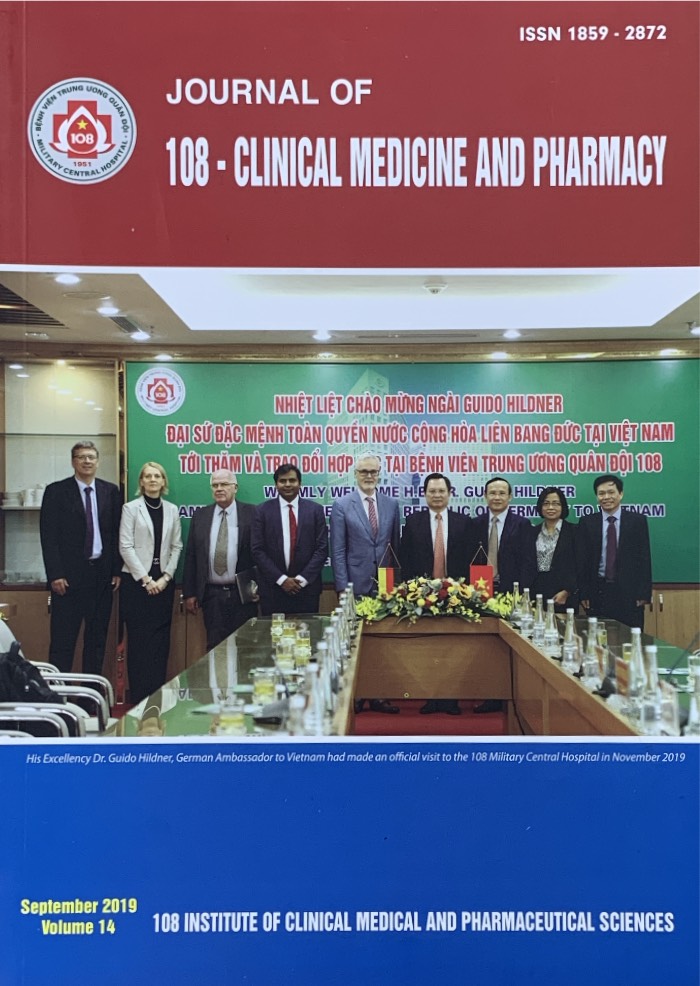Correlation of hepatic venous pressure gradient with varices, bleeding, ascites and Child’s status in patients with Hepatitis B virus-related decompensated liver cirrhosis
Main Article Content
Keywords
Tóm tắt
Objective: To investigate the relationship of hepatic venous pressure gradient (HVPG) with variceal size, ascites, Child-Pugh, and history of varice bleeding in decompensated liver cirrhosis patients due to hepatitis B virus (HBV). Subject and method: Patients with cirrhotic portal hypertension were enrolled in the study, who underwent clinical, paraclinical examination, include: Upper endoscopy, abdominal ultrasound, and HVPG measurement. Result: 51 liver cirrhosis patients (Male : female, 39 : 12; mean age 55.5 ± 9.58 years). The mean HVPG was lower in patients with no varices (11.94 ± 3.08mmHg) than in patients with varices (16.6 ± 3.58mmHg), p<0.001). The mean HVPG in bleeders was higher than in nonbleeders (17.23 ± 2.66 vs 14.42 ± 4.20mmHg; p<0.05). The mean HVPG was significantly higher in Child’s B (16.28 ± 3.17mmHg) and C (22.00 ± 0.00mmHg) compared to Child’s A cirrhotics (12.17 ± 3.71mmHg; p<0.01). There was no significant differences in HVPG between patients with ascites and those without ascites (16.07 ± 2.64 vs 14.16 ± 4.41mmHg; p=0.091). Conclusion: The hepatic venous pressure gradient clearly reflects portal pressure in cirrhotic portal hypertension. And its had a strong relation with variceal bleeding, Child’s status, esophageal varices and size of varices.
 ISSN: 1859 - 2872
ISSN: 1859 - 2872
